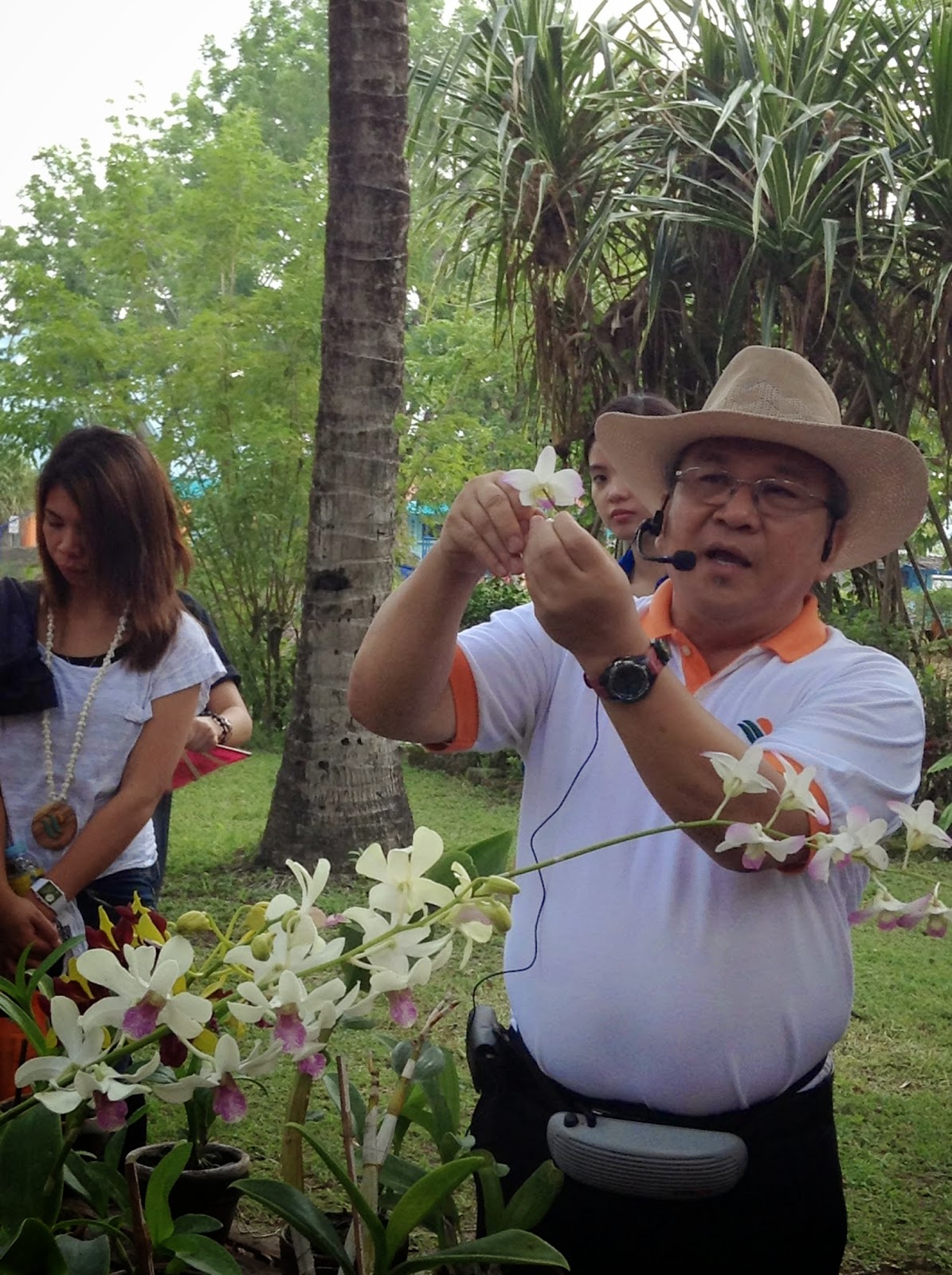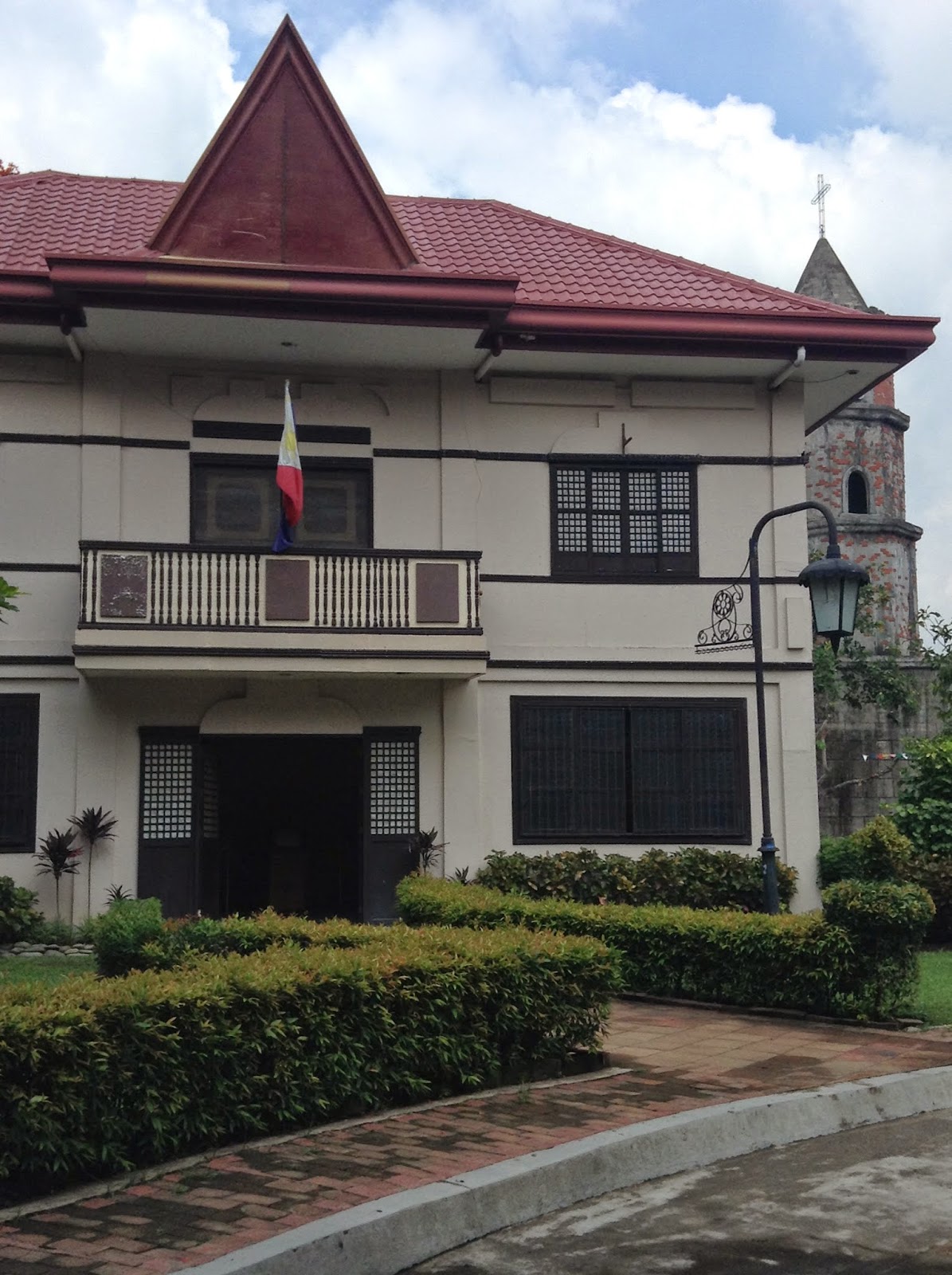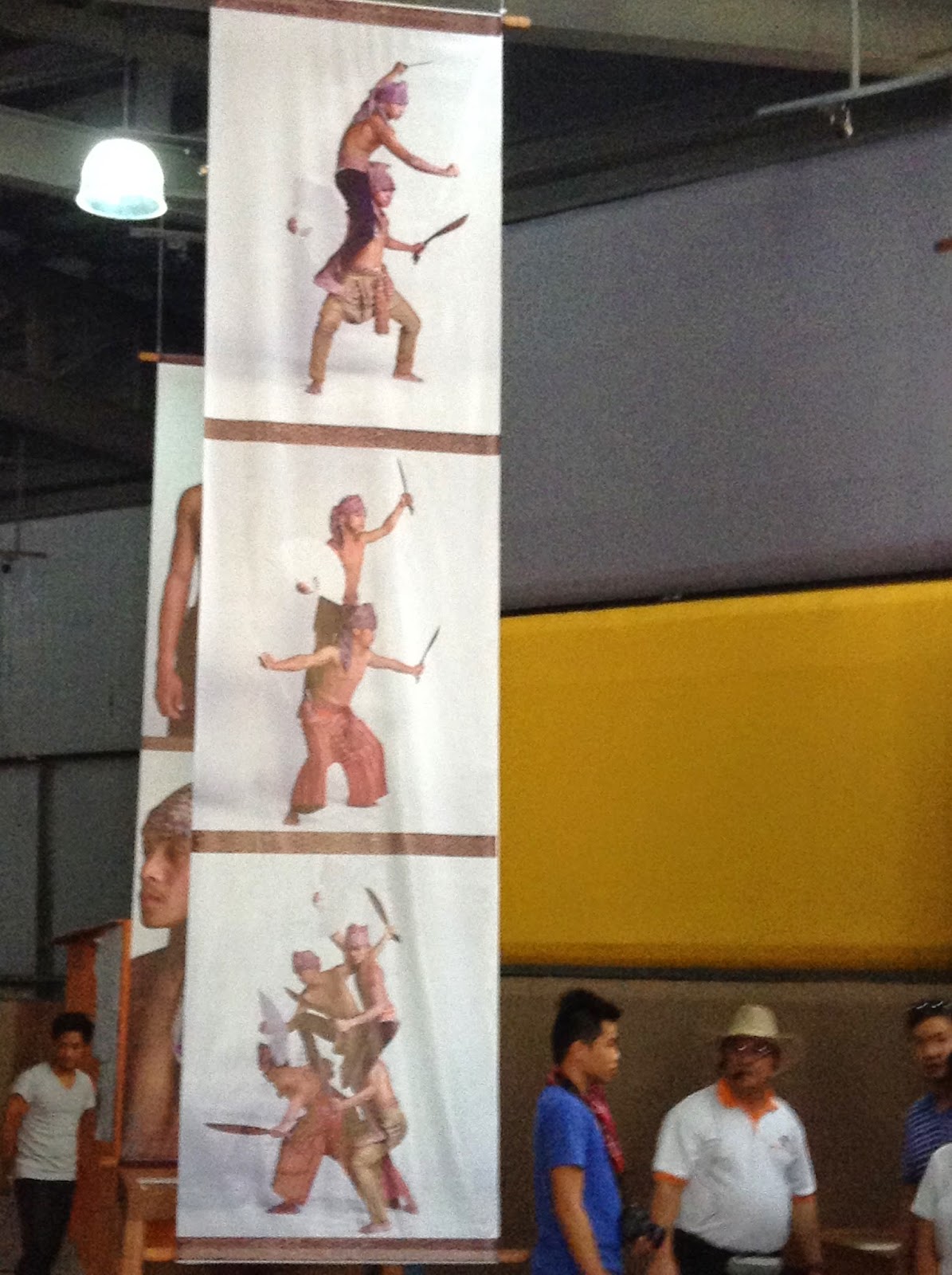 |
| Program for the Famtour/Orientation |
I have not been to the old Nayong Pilipino in its former location in Paranaque City, but I have been here, in this new location in Clark Freeport Zone and I could say that this time, I was impressed.
Lucky also to have the Executive Director of the Nayong Pilipino Foundation Atty. Jun Anota as our guide. I can say that he sure does know his Philippine History. I learned a lot from him. I can see the passion in his eyes when he talks about the changes the park will be going through in the next years to come.
 |
| Garland for the special guests |
The Orchidarium
Nayong Pilipino is not just a theme park, but an educational institution as well. Science has now become an integral part of the park, and can even be a model environment structure to combat climate change. It has added fountains in the park to add moisture to the orchidarium. This orchidarium will be better than that of Singapore once the plants are in full bloom come August. After a video presentation on propagating orchids, guests were given first-hand experience in artificially pollinating an orchid. The orchidarium is also home to the rarest orchids in the world.
 | |
|
 |
| Guests have first-hand experience in pollinating orchids. |
 |
| This fountain has many purposes, one is to maintain the moisture inside the orchidarium. |
 |
| Rarest orchid..:) |
Nayong Pilipino has replicas of some of the more known villages of ethnic tribes in the Philippines. Among them were the Aeta Village, Kalinga and Ifugao Village. I felt a sense of pride to know the ingenuity of the Filipinos , of being great architects even in ancient times. The houses that they built were earthquake proof, such as the Maranao's and the Kalinga's houses. Did you know that Kalinga Apayao once became the capital of the Philippines around the 1900's when Gen. Aguinaldo retreated to the north? The very house that the general stayed at has a replica in the Villages.
 | |
|
 | |
|
The Historical Houses
 |
| A Maranao house..earthquake-proof and typhoon-proof. |
 |
| Inside Jose Rizal replica house, behind me is a bust of our national hero. |
 | |
|
 | |
|
 | |
|
 | |
|
Museum of Weaves
This is a new addition to the park. This museum contains artifacts of the different weaves of our forefathers. Too bad the tradition has stopped and has not been passed on to the younger generation. It is sad that the most beautiful weaves and materials used to come from our country. The designs were just so intricate and the weaves were so fine that only experts with dainty hands could have woven those elegant pieces of silk.
 |
| OIC of the museum, Anica Alcopra. |
 | |
|
 | |
|
I'm proud of my culture, I'm proud of my heritage. I am proud to be Filipino.
See more of our culture in my next post Nayong Pilipino: A Cultural Presentation.
Keep the faith,
-Mei













0 comments